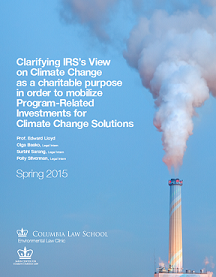by Yan Gu
The White House released a briefing on June 8 stating that the U.S. and China have agreed upon a joint effort to control the production and consumption of hydrofluorocarbons. Commonly known as HFCs, the chemicals are used as a substitute for ozone-depleting substances such as chlorofluorocarbons and halons in refrigerators and air conditioners. While effectively helping to wipe out those substances ruining the ozone, HFCs have the unfortunate side effect of strongly contributing to a warming effect to the atmosphere—an effect that’s 1430 times more potent than CO2. Although the Montreal Protocol has been deemed a success in achieving its aim of reducing ozone depletion, as observed by the White House Statement: “the unintended consequence [of the transitions induced by the Protocol] is the rapid current and projected future growth of climate-damaging HFCs.” Accounting for 2 percent of total greenhouse gases (GHGs) currently, HFC emissions are projected to skyrocket to 20 percent emitted CO2-equivalents by 2050.
In a recent meeting in California between President Obama and Chinese President Xi, the two leaders agreed that their countries will “use the expertise and institutions of the Montreal Protocol” together and with other countries to reduce HFCs. The global benefit of curbing the spur of HFCs is expected to be 90 gigatons of CO2 equivalent by 2050, according to the White House statement.
This is not the first time that the U.S. has attempted to use the Montreal Protocol to achieve GHG reduction. In the past four years, the U.S., along with Canada and Mexico, has proposed an amendment to the Montreal Protocol to address the side effects of HFC. As many speakers at Montreal Protocol debates have put it, “The Montreal Protocol created this monster, and the Montreal Protocol has to clean it up.” One recent development of the multinational proposal was the 2013 North American Amendment Proposal to Address HFCs under the Montreal Protocol, which was submitted on April 2013. It’s estimated that the world total cumulative benefits of that proposal may achieve 95,400 million metric tons of CO2-equivalent reductions in HFC and other climate-damaging byproducts.
However, China, India and Brazil opposed the proposal in spite of the support from 108 countries because of considerable profits generated from Certified Emission Reductions (CERs). In past years, HFC reduction in China has been associated with fraudulent carbon offsets that led to the overproduction of HFC credits. The Environmental Investigation Agency (EIA) protested that some CDM project developers purposely over-released HFCs by substituting CFCs and then requested carbon credits by destroying those HFCs. However, the EU’s ban on trading offset credits for HFCs on EU Emission Trading Scheme (ETS) markets, which was officially adopted since the beginning of 2013, has reduced the profitability and has likely influenced China’s willingness to work with the U.S. to reduce HFC.
In the U.S., the potent greenhouse gas HFC was on the target list of the Waxman-Markey Bill as early as 2009 in a separate regulation. The Bill proposed that HFC producers must own permits or offset credits in order to increase the cost of HFC consumption. Later in 2010, the Natural Resources Defense Council (NRDC) petitioned the EPA to remove HFCs from the list of acceptable substitutes for CFCs used in motor vehicle air conditioners (MVACs) and some other end-use appliances. Under the Clean Air Act, EPA has the authority to publish and revise the list of approved substitutes. In response, the EPA decided that the petitions were effective with respect to new MVACs but that the petitions for other uses remained incomplete.
The recent breakthrough agreement between the U.S. and China is an important signal for both the Montreal Protocol and United Nations Framework Convention on Climate Change.
Though HFCs comprise a small portion of climate policy, from a long-term point of view, the willingness for the world’s biggest climate stakeholders to engage in conversation and cooperation is an important future indicator of the global ability to meet an international climate goal.




